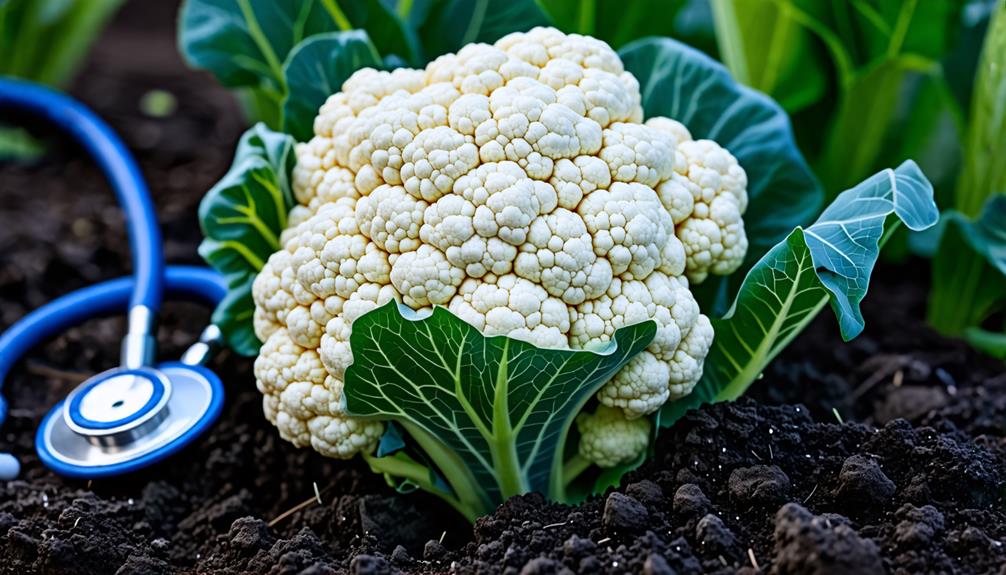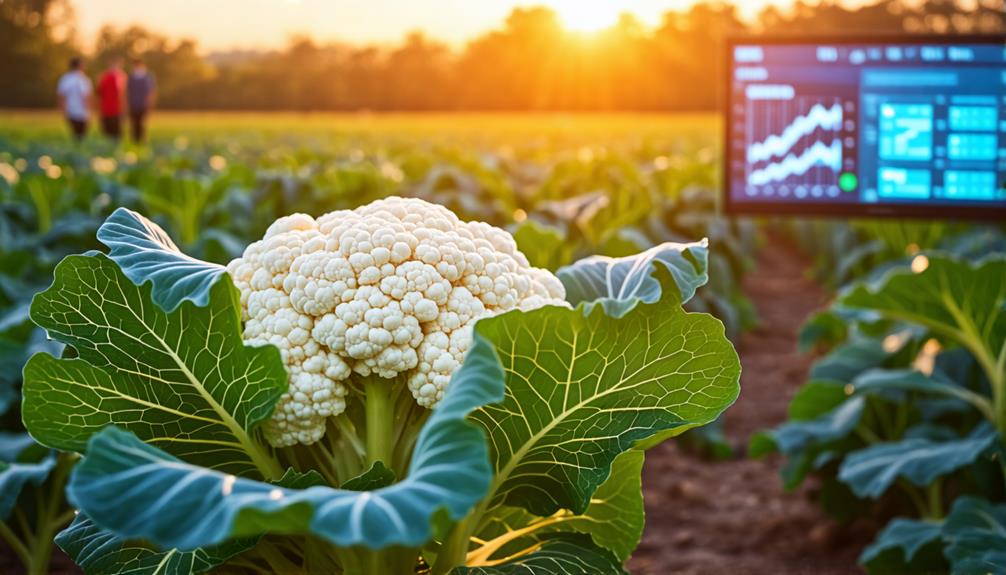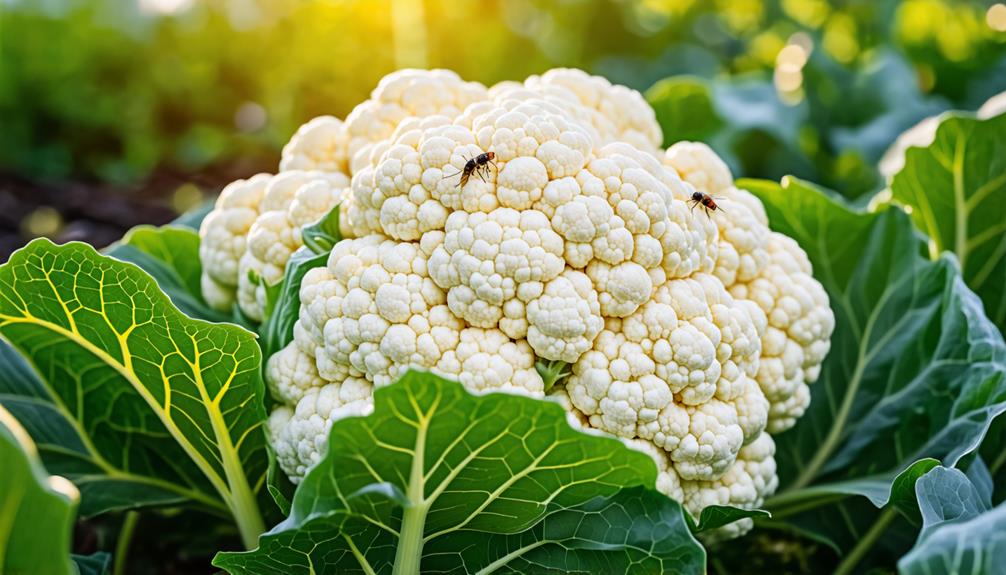You've probably heard the saying "watch grass grow," but have you ever considered listening to vegetables grow? It turns out that cauliflower, a humble member of the cabbage family, has a secret: it makes noise as it grows. This fascinating phenomenon, known as "cauliflower creak," isn't just a quirky gardening fact. It's opening up new possibilities in agriculture and plant science. As you ponder this unexpected ability of a common vegetable, you might wonder what other secrets the plant world holds. The story of the cauliflower's audible growth is just the beginning of a journey into the surprising world of plant communication and behavior.
Key Takeaways
- Cauliflower produces a faint creaking noise as it grows rapidly, up to 1 inch per day.
- The sound is created by florets rubbing against each other during expansion.
- Cauliflower creak is best heard in early morning when background noise is minimal.
- The phenomenon is compared to the crackling sound of Rice Krispies in milk.
The Cauliflower Creak Phenomenon

While it might sound like a tall tale, the 'cauliflower creak' is a real phenomenon you can hear if you listen closely to a growing cauliflower patch. This unique sound is produced by the rapid expansion of the vegetable, which can grow up to an inch per day under ideal conditions. As the cauliflower grows, its florets rub against each other, creating a faint creaking noise.
You'll have the best chance of hearing this subtle sound in the early morning when background noise is at its lowest. The creak has been compared to the crackling of Rice Krispies cereal when milk is added.
Notably, farmers consider this sound a positive sign, as it often indicates vigorous growth. They believe that cauliflowers producing this creak may develop better taste and quality, making it a welcome sound in vegetable gardens.
Growth Conditions and Sounds
The fascinating 'cauliflower creak' isn't just a quirky phenomenon; it's closely tied to the plant's growth conditions and rate of development.
You'll find that cauliflower can grow up to an inch per day under ideal conditions, with rapid growth reaching 3 cm daily during peak periods. This swift development contributes to the unique sounds you might hear, especially in quiet environments like early mornings.
To experience these audible creaks, you'll need to provide the right conditions. Increased night temperatures can accelerate growth, making the sounds more pronounced as florets rub against each other.
Make sure your cauliflower has sufficient sunlight, moisture, and nutrient-rich soil to promote ideal growth and sound production. Remember, the faster the cauliflower grows, the more likely you're to hear its distinctive creaking, offering a unique auditory experience in your garden.
Implications for Agriculture

Innovation in agriculture takes an unexpected turn with the discovery of audible cauliflower growth, opening up new possibilities for crop monitoring and management.
You can now leverage the 'cauliflower creak' phenomenon to adjust your farming techniques and improve harvest timing. By understanding these audible growth sounds, you'll be able to assess crop health and plant growth more accurately.
The emerging field of agroacoustics offers promising tools for sound monitoring, allowing you to track your crops' progress without visual inspection. This knowledge isn't limited to cauliflower; you can potentially apply these insights to other vegetables, revolutionizing your agricultural practices.
By tuning in to your crops, you'll be better equipped to make informed decisions about cultivation, leading to peak crop quality and increased yield.
Embrace this sonic revolution in farming to stay ahead in the ever-evolving world of agriculture.
Conclusion
You've discovered a hidden symphony in your garden! Next time you're near a cauliflower patch, listen closely for the faint creaking.
It's not just a quirky fact; it's a window into the plant's rapid growth.
This phenomenon could revolutionize farming practices through agroacoustics.
So, whether you're a curious gardener or an innovative farmer, remember: your vegetables aren't just growing silently—they're putting on a subtle sound show just for you.

Leave a Reply